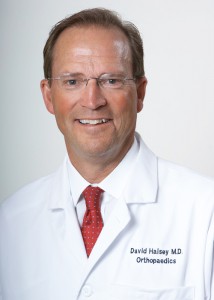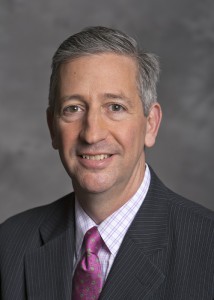Location
The Nines Hotel
525 SW Morrison St
Portland, OR 97204
877-229-9995
A block of rooms has been reserved for OAOS: $239/night + taxes & fees
Date
November 2, 2018 – 7:45am to 4:45pm
November 3, 2018 – 7:30am to 4:10pm
Target Audience/Program Focus
OAOS plans educational activities for orthopaedic doctors in Oregon and surrounding areas. We seek to serve the educational needs of our membership, as well as the needs of local and regional orthopaedic doctors. Our program is open to orthopaedic physicians and physician assistants that are currently in practice, orthopaedic physicians in residency programs, as well as retired and part-time physicians.
Accreditation
This activity has been planned and implemented in accordance with the accreditation requirements and policies of the Accreditation Council for Continuing Medical Education (ACCME) through the joint providership of the American Academy of Orthopaedic Surgeons and the Oregon Association of Orthopaedic Surgeons. The American Academy of Orthopaedic Surgeons is accredited by the ACCME to provide continuing medical education for physicians.
CME Credit
The American Academy of Orthopaedic Surgeons designates this live activity for a maximum of 14 AMA PRA Category 1 Credits™. Physicians should claim only the credit commensurate with the extent of their participation in the activity.
Guest Faculty
David Halsey, MD
Chief of Orthopaedic Surgery
Martha’s Vineyard Hospital
Professor, Department of Orthopaedics
Vermont College of Medicine
2018 AAOS President
Paul Tornetta, MD
Chief, Dept of Orthopaedic Surgery & Director, Orthopaedic Trauma
Boston Medical Center
Professor & Chairman, Dept of Orthopaedic Surgery
Boston University School of Medicine
Seth Leopold, MD
Editor in Chief
Clinical Orthopaedics and Related Research
Professor, University of Washington School of Medicine
2018 Orthopaedic Conference:
“Controversies in the Operative Management of Orthopaedic Injuries”
Friday, November 2, 2018
| 7:45 – 8:25 AM | Registration/Breakfast | |||
| 8:25 – 8:30 AM | President’s Welcome | Blake Nonweiler, MD | ||
| Fracture Complications | Moderated by Amer Mirza, MD | ||||
| 8:30 – 8:45 AM | Supracondylar Femur Fractures: Nail or Plate | Paul Tornetta, MD | ||
| 8:45 – 9:00 AM | Tibial Fractures: Complications | Darin Friess, MD | ||
| 9:00 – 9:15 AM | Complications of Foot and Ankle Fractures | Scott Woll, MD | ||
| 9:15 – 9:30 AM | OR Fluoroscopy Radiation Exposure | Tim Keenen, MD | ||
| 9:30 – 9:45 AM | Surgical Consent: The Patient Should Decide | Paul Tornetta, MD | ||
| 9:45 – 10:00 AM | 15-Minute Q&A | |||
| 10:00 – 10:15 AM | Break/Exhibitor Visits | |||
| Upper Extremity Fractures & Dislocations | Moderated by Greg Gramstad, MD | ||||
| 10:15 – 10:30 AM | Shoulder Dislocations & Instability | Greg Gramstad, MD | ||
| 10:30 – 10:45 AM | Proximal Humerus Fractures: Trepidation Exemplified | Brian Galinat, MD | ||
| 10:45 – 11:00 AM | Should We Plate Clavicle Fractures? | Paul Tornetta, MD | ||
| 11:00 – 11:15 AM | Elbow Fractures and Dislocations | Rob Orfaly, MD | ||
| 11:15 – 11:30 AM | The Case for External Fixation of Distal Radius Fractures | Paul Tornetta, MD | ||
| 11:30 – 11:45 AM | 15-Minute Q&A | |||
| 11:45 – 12:05 AM | Annual Meeting | |||
| 12:05 – 12:35 AM | Lunch/Exhibitor Visits | |||
| AAOS Town Hall | ||||
| 12:35 – 1:00 PM | Update | David Halsey, MD | ||
| 1:00 – 1:15 PM | 15-Minute Q&A | |||
| 1:15 – 1:30 PM | Break/Exhibitor Visits | |||
| Lower Extremity Fracture Management | Moderated by Paul Duwelius, MD | ||||
| 1:30 – 1:45 PM | Common Foot Injuries | Scott Woll, MD | ||
| 1:45 – 2:00 PM | Syndesmotic Injuries: Indications and Reduction Techniques | Paul Tornetta, MD | ||
| 2:00 – 2:15 PM | Approaches to Nailing Tibial Fractures | Zach Working, MD | ||
| 2:15 – 2:30 PM | Surgical Approaches to Pilon Fractures | Paul Tornetta, MD | ||
| 2:30 – 2:45 PM | 15-Minute Q&A | |||
| 2:45 – 3:00 PM | Break/Exhibitor Visits | |||
| The Opioid Crisis in America: Orthopaedic Responsibility & Response | Moderated by Robert Orfaly, MD | ||||
| 3:00 – 3:15 PM | 300 Seconds to Save a Life: The Opioid Epidemic at Your Doorstep | Rich Barry, MD | ||
| 3:15 – 3:30 PM | The AAOS Initiative | David Halsey, MD | ||
| 3:30 – 3:45 PM | State Wide Drug Take Back Program | Rep. Sheri Malstrom | ||
| 3:45 – 4:00 PM | Perioperative Pain Management | Paul Duwelius, MD | ||
| 4:00 – 4:15 PM | 15-Minute Panel Discussion | |||
| 4:15 – 4:45 PM | Adjourn/Exhibitor Visits | |||
| 5:30 – 7:30 PM BOARD/FACULTY DINNER |
Saturday, November 3, 2018
| 7:30 – 8:00 AM | Breakfast Buffet | |||
| Hip & Knee Joint Injuries | Moderated by Blake Nonweiler, MD | ||||
| 8:00 – 8:15 AM | Catastrophic Knee Injuries | Matt Shapiro, MD | ||
| 8:15 – 8:30 AM | ACL Revision Surgery | Dennis Crawford, MD | ||
| 8:30 – 8:45 AM | Femoral Neck Fractures: Ages 45-65 | Darin Friess, MD | ||
| 8:45 – 9:00 AM | Periprosthetic Fractures | Kathryn Schabel, MD | ||
| 9:00 – 9:15 AM | 15-Minute Q&A | |||
| 9:15 – 9:25 AM | Break/Exhibitor Visits | |||
| Patello-Femoral Challenges | Moderated by Dennis Crawford, MD | ||||
| 9:250 – 9:40 AM | The First-Time Patellofemoral Dislocator | Jacqueline Brady, MD | ||
| 9:40 – 9:55 AM | Traumatic Extensor Mechanism Injuries | Wade Gordon, MD | ||
| 9:55 – 10:10 AM | Updates in the Treatment of Recurrent Patellar Instability | Miho Tanaka, MD | ||
| 10:10 – 10:25 AM | When TKR Patellas Don’t Track Right | David Halsey, MD | ||
| 10:25 – 10:40 AM | 15-Minute Q&A | |||
| 10:40 – 10:50 AM | Break/Exhibitor Visits | |||
| How We Learn: Reading, Writing & ‘Rithmatic? | Moderated by Britton Frome, MD | ||||
| 10:50 – 11:05 AM | The Future of CME | Paul Tornetta, MD | ||
| 11:05 – 11:20 AM | Slick, One Click & Free: How Residents Study | Travis Philipp, MD | ||
| 11:20 – 11:35 AM | Getting the Most From What You Read in Journals | Seth Leopold, MD | ||
| 11:35 – 11:50 AM | Critical Analysis of Articles | Paul Tornetta, MD | ||
| 11:50 – 12:05 AM | 15-Minute Panel Discussion | |||
| 12:05 – 12:35 PM | Lunch/Exhibitor Visits | |||
| Catching Knowledge in a Sea of Information | Moderated by Tamara Simpson, MD | ||||
| 12:35 – 1:00 PM | Where our Knowledge Comes From: Quality and Integrity in Scientific Reporting | Seth Leopold, MD | ||
| 1:00 – 1:15 PM | Fresh from the Current Certification Experience | Kenneth Gundle, MD | ||
| 1:15 – 1:30 PM | Recertifying: A Lot is Changing | David Halsey, MD | ||
| 1:30 – 1:45 PM | 15-Minute Panel Discussion | |||
| 1:45 – 1:50 PM | Break | |||
| Lessons of War: Military Trauma Surgery | Moderated by Edward Arrington, MD | ||||
| 1:50 – 2:05 PM | Experiences of Operations Enduring Freedom, Freedom’s Sentinel and Resolute Support | Scott Woll, MD | ||
| 2:05 – 2:20 PM | Surgical Management of the Combat Amputee | Wade Gordon, MD | ||
| 2:20 – 2:35 PM | Introduction to Clinical Care of the Combat Wounded | Edward Arrington, MD | ||
| 2:35 – 2:50 PM | 15-Minute Q&A | |||
| 2:50 – 2:55 PM | Break | |||
| Covering ED Call: Anything Can Happen | Moderated by Zach Working, MD | ||||
| 2:55 – 3:10 PM | Hand Infections | Omar Nazir, MD | ||
| 3:10 – 3:25 PM | Supracondylar Humerus Fractures in Children | Scott Yang, MD | ||
| 3:25 – 3:40 PM | Pathologic Fractures on Call | Kenneth Gundle, MD | ||
| 3:40 – 3:55 PM | Management of Open Tibia Fractures | Paul Tornetta, MD | ||
| 3:55 – 4:10 PM | 15-Minute Q&A | |||
| 4:10 PM | Adjourn | |||
Educational Objectives
300 Seconds to Save a Life: The Opioid Epidemic at Your Doorstep
- Understand the local nature and extent of opioid abuse.
- Identify high risk opioid prescribing patterns and available steps for providers to mitigate community risk.
- Understand the importance of readily available Narcan.
The AAOS Initiative
Inform members of the AAOS response to The Opioid Crisis.
State Wide Drug Take Back Program
- Describe problem: there are too many unused and unwanted opioids in circulation.
- Describe negative impacts of overabundance of opioids.
- Propose solution: a state-wide drug take back program modelled after Washington state’s HB 1047.
Perioperative Pain Management
- How to decrease opioid consumption.
- Define updated total joint/ex. Pathways.
- Team concept of outpatient total joint surgery.
Catastrophic Knee Injuries
- Understand the vascular and neurologic consequences of traumatic knee dislocations.
- Learn how to initially evaluate traumatic knee dislocations and associated injuries.
- Consider a variety of treatment alternatives in the setting of traumatic knee dislocations.
ACL Revision Surgery
- Define ACL Reconstruction “Failure.”
- Identify principal causes of ACL Reconstruction “Failure.”
- Provide approach to minimizing ACL Reconstruction “Failure” and improving approach to revision ACL surgery.
Femoral Neck Fractures: Age 45-65
- Review the basic considerations for fracture treatment algorithms in young and old patients.
- Understand cost and outcomes data to support when an arthroplasty may be a better solution.
- Learn new methods for fixing a femoral neck fracture.
Periprosthetic Fractures
- Understand common patterns of periprosthetic fractures.
- Describe surgical principals and techniques for fixation.
- Explore material and implant factors related to fracture and reconstruction.
The First-Time Patellofemoral Dislocator
- Understand the basic anatomy and biomechanics of the patellofemoral joint and reasons for overload
- Understand indications for advanced imaging in patients with anterior knee pain
- Be familiar with current options for surgical treatment of chondral injuries in the patellofemoral joint
Traumatic Extensor Mechanism Injuries
- To understand the current evidence for the management of extensor mechanism injuries.
- Exploring options for managing complex patella fractures.
- Discuss approaches to challenging injuries to the patella and extensor mechanism.
Updates in the Treatment of Patellar Instability
- Understand the factors contributing to recurrent instability.
- Understand the indications and treatment algorithm for procedures to treat recurrent instability.
- Understand the complications associated with PF instability surgery.
When TKR Patellas Don’t Track Right
- Review step-wise surgical approach to the problem of intra-operative patellofemoral tracking problems in total knee arthroplasty.
Supracondylar Femur Fractures: Nail or Plate
- Literature review and technique explanation of both procedures.
- Risk analysis of these two techniques.
- Learn the potential outcomes and complications of both procedures.
Complications of Foot and Ankle Fractures
- Recognize factors associated with complications.
- Understand and employ techniques to avoid complications in complex injuries.
- Be aware of salvage techniques for complex fractures.
Tibial Fractures: Complications
- Learn a basic framework for managing acute infection after tibia fracture.
- Learn a basic framework for managing compartment syndrome.
- How to manage early complex regional pain syndrome.
OR Fluoroscopy Radiation Exposure
- Identify who has the highest radiation exposure around the image intensifier.
- Know the maximum radiation exposure allowed per year.
- Learn ways to return fluoroscopy exposure in the operating room.
Surgical Consent: The Patient Should Decide
- Discuss key elements of informed consent.
- Review the benefits of shared decision making and the consent process.
- Author’s preference: an informed patient can best decide.
Shoulder Dislocations & Instability
- Improve our understanding of how to diagnose and evaluate the unstable shoulder.
- Improve our ability to determine the proper treatment and technique of repair of the unstable shoulder.
Proximal Humerus Fractures: Trepidation Exemplified
- Learn the common technical flaws that increase the risk of failure of ORIF.
- Gain clarity on the judicious use of reverse total shoulder arthroplasty for fracture.
- Understand salvage options for clinical dysfunction after initial management.
Should We Plate Clavicle Fractures?
- Understand what happens when natural healing occurs.
- Learn about technical considerations and possible outcomes and revisions.
- Learn which method the Author prefers and why.
Elbow Fractures and Dislocations
- Review common mechanisms of elbow injury.
- Identify the most effective means of assessing patterns of elbow fractures and instability.
- Identify key features of management of simple and complex elbow injuries.
The Case for External Fixation of Distal Radius Fractures
- Review of data outcomes.
- Complications of volar plate fixation.
- Discussion of the author’s preferred technique.
AAOS Update
This presentation will provide OAOS members with an update on AAOS priorities and advocacy.
Common Foot Injuries
- Recognize common foot injuries.
- Describe current management.
- Recognize sequela of common foot injuries.
Syndesmotic Injuries: Indications and Reduction Techniques
- Learn the difference between open and closed techniques.
- Evaluate outcomes vs displacement.
- Indications for staged treatment.
Approaches to Nailing Tibial Fractures
- To familiarize attendee’s with the infrapatellar, suprapatellar, and semi-extended methods of tibial nailing.
- To review the existing literature on the differences in nailing methods.
- To discuss tips and tricks for employing these methods successfully.
Surgical Approaches to Pilon Fractures
- Classification of Pilon fractures.
- Learn how to evaluate skin blood supply.
- Author’s preferred treatment, pitfalls.
The Future of CME
- Increase knowledge in the growing digital access to CME.
- How to contribute to our literature.
- Review of AAOS initiatives.
Slick, One Click and Free: How Residents Study
- Describe differences in how students/residents study for high-stakes tests and trends in performance.
- Introduce online study tools and resources used by residents to study for cases, the OITE and part 1 of the board exam.
Getting the Most From What You Read in Journals
- To identify the common kinds of bias in the studies we read, and understand their likely influences on the results claimed by those studies.
- To understand the difference between internal and external validity of a research study, and why each is important.
- To learn the key “questions” to ask of an article’s Methods section for each of the common study designs we see in orthopaedic journals.
Critical Analysis of Articles
- Common errors of abstracts, conclusions.
- Recognizing statistical use and abuse.
- When is meta analysis of real value?
Where Our Knowledge Comes From: Quality and Integrity in Scientific Reporting
- To understand what common factors related to the quality of scientific reporting influence the decisions journals make as they determine whether to publish or not.
- To learn what ethical issues come up commonly in manuscripts from the United States and around the world.
- To get a sense for the tools journals use when thorny ethical issues arise (COPE’s flowcharts and others).
Fresh from the Current Certification Experience
- Update on new changes, including email requirement/surveys.
- Understand current case list process.
- Understand current timeline and mandates.
Recertifying: A Lot is Changing
- Provide update on recent ABOS MOC process changes.
- AAOS advocacy regarding ABOS MOC.
Experiences of Operations Enduring Freedom, Freedom’s Sentinel and Resolute Support
- Be aware of the five echelons of military trauma care.
- Present the role of the orthopaedic surgeon in far forward deployment.
- Learn the contributions of military trauma care to civilian trauma care.
- How to become involved.
Surgical Management of the Combat Amputee
- Understand the basic tenets of lower extremity amputations.
- Understand the challenges specific to the management combat related amputations.
- Understand how the challenges inherent to this patient population are transferrable to the civilian setting.
Hand Infections
- Understand the potential spaces within the hand where infections can spread.
- Describe appropriate incisions for surgical management of infections.
- Identify mimickers of acute infection.
Supracondylar Humerus Fractures in Children
- Understand the basics of treating supracondylar humerus fractures.
- Understand current controversies and what to do in difficult situations with this fracture (ie: neurovascular injury).
Pathologic Fractures on Call
- Gain familiarity with an efficient evaluation of pathologic fracture with an unknown primary.
- Understand when a biopsy is necessary before proceeding with stabilization, and when it isn’t.
- How to think through arthroplasty vs nailing for proximal femur pathologic fractures.
Management of Open Tibia Fractures
- Learn the precise timing of antibiotics and implants.
- Describe external fixation indications and techniques.
- Learn how to avoid complications.
Disclosures
All faculty members and planning committee members participating in this educational program are expected to disclose to the program audience any significant financial interest and/or other relationship with the manufacturers and providers of commercial products and/or services discussed in their presentation, and their relationship or financial interest in any commercial contributor to the educational activity.
Please visit the AAOS disclosure website to see updated disclosures for all 2018 faculty, staff and planning committee members.





